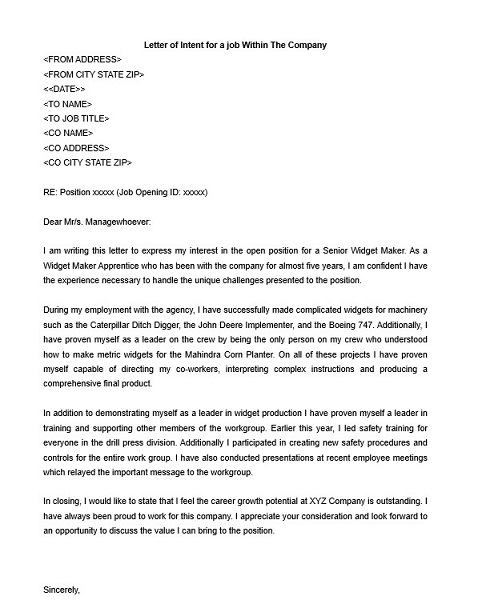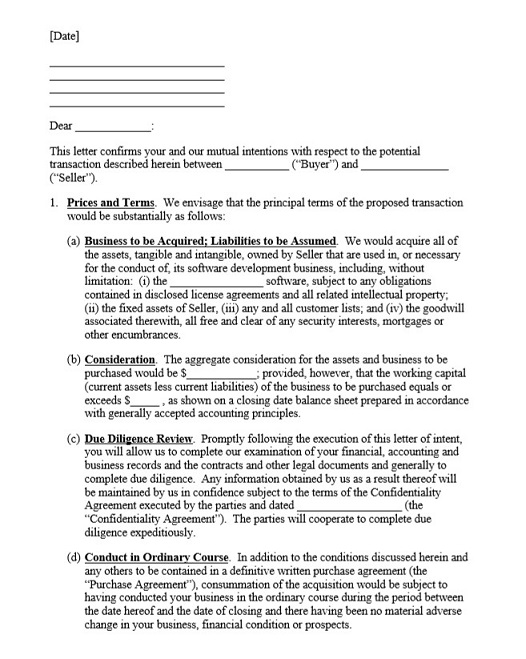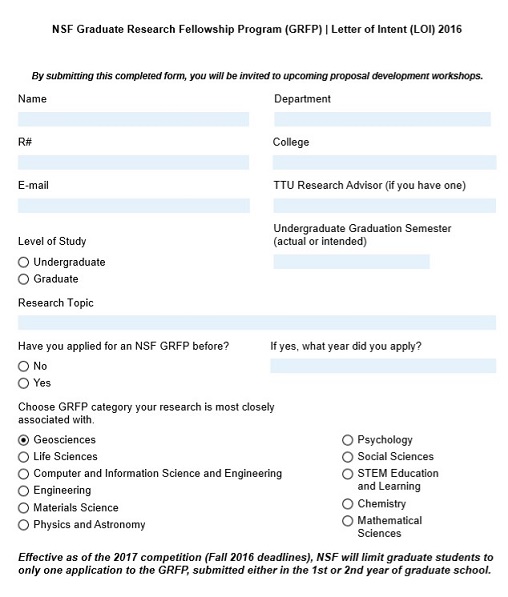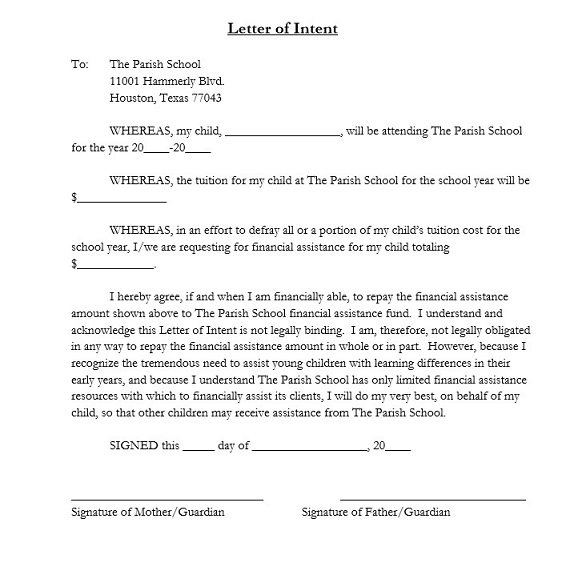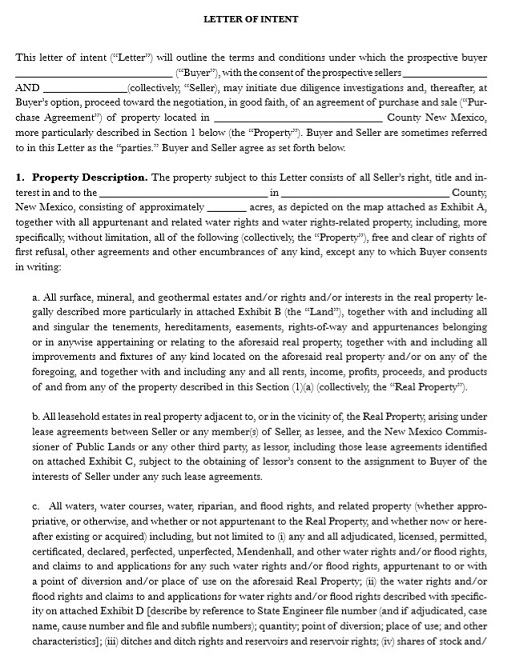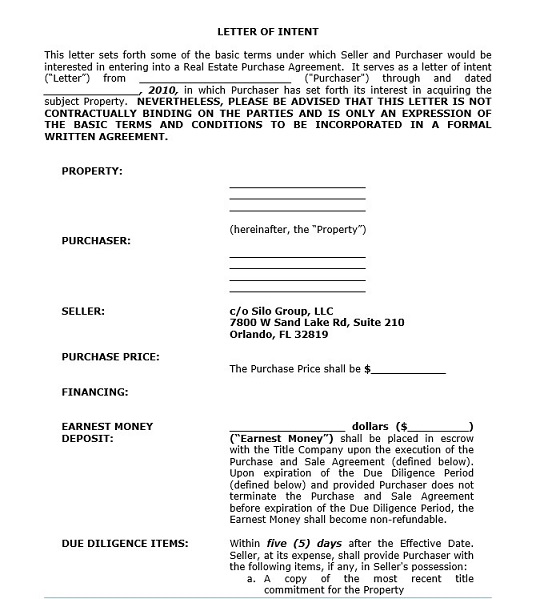A Letter of Intent (LOI) is a formal, written statement outlining the initial agreement between two parties who plan to join a contract or deal.
In business transactions, It has a crucial role. It’s a way for parties to reach a prior agreement, providing a framework for the deal without obligating them to finalize it.
It’s a way to guarantee that all parties understand the deal and are on the exact page before moving forward.
Main Parts of a Formal Letter of Intent
In some types of business, it is not enough if the agreement is only done in a spoken way and through some handshakes. To avoid problems and misunderstanding later, there must be a letter written down as the sign of the agreement. It is namely the letter of intent. There is actually no default form regarding this letter type. However, there are some points that are essential and important to include. What are they?
Heading
Since the letter is commonly used between two companies or a company with a customer, it is categorized as a formal letter. It means that there should be the heading. The heading consists of the company’s name, symbol, and tagline along with possible contacts. The contacts can be the address, email, phone number, and the likes. They must be available on the letter of intent template.
Introduction
In general, the letter is shaped just like other conventional letters. It means there must be an opening or introduction part. The introduction must be typed well with the letter’s recipient to be mentioned clearly. Commonly, it is about the reason why the transaction should be done between the two parties. The introduction is typed briefly but on points so that the recipient will not spend too much time only for reading it.
Content
After the introduction, there is the content of the letter. The content is basically the continuity of the introduction mentioned above. This way, the details of the transaction must be mentioned. Just like other formal letters, mention also if there are some other documents to attach. The letter of intent example even shows the details of personal data mentioned including the name, address, age, and others when the letter is made by a client personally to the company.
The Importance of a Letter of Intent
The importance of a Letter of Intent (LOI) in business transactions cannot be overstated. It serves as a critical tool in facilitating smooth and successful business deals. Here’s why:
Clarity and Understanding: An LOI helps to clarify the key points of a complex deal.
Foundation for Formal Agreement: The LOI is a foundation for the final, formal agreement.
Risk Mitigation: By outlining the terms of the deal, an LOI helps to mitigate risks.
Confidentiality and Exclusivity: An LOI can include legally binding clauses such as confidentiality and exclusivity agreements. These clauses protect sensitive information and ensure that the parties involved are not negotiating with others during the agreement period.
Demonstrates Serious Intent: Lastly, an LOI reflects a party’s serious intent to proceed with the deal. It shows commitment and can help build trust between the parties involved.
a Letter of Intent is a vital instrument in business transactions. It provides clarity and understanding and helps mitigate risks, protect sensitive information, and build trust among the parties involved.
Tips for Writing a Letter of Intent
Writing a Letter of Intent (LOI) can be crucial in initiating a business transaction. Here are some practical tips and best practices to keep in mind:
- Be Concise: An effective LOI is concise and to the point. Avoid unnecessary jargon and keep your sentences short and precise.
- Be Clear: Clarity is critical in an LOI. Make sure your intentions and the details of the transaction are clearly stated. Avoid any ambiguity that could lead to misunderstandings in the future.
- Stay Professional: Maintain a professional tone throughout the letter. Even if you have a casual relationship with the recipient, an LOI is a formal document and should be treated as such.
- Proofread: Always proofread your LOI before sending it. Check for any grammatical errors, typos, or inaccuracies in the details. A well-written, error-free letter communicates your intentions clearly and reflects your professionalism.
- Include Contact Information: Remember to include your contact information in the letter. It makes it easy for the recipient to contact you if they have questions or need further clarification.
- Sign the Letter: Always sign the letter. A signature adds a personal touch and shows the recipient that the letter is coming from a credible source.
Remember, an LOI is often the first step in a business transaction. A well-written LOI can set a positive tone for the rest of the trade and help ensure a smooth process.
Common Mistakes to Avoid When Writing a Letter of Intent
Writing a letter of intent (LOI) is crucial in many business transactions. However, there are everyday things that people often need to correct when drafting their LOI. Here are some of these mistakes and advice on how to avoid them:
Being Too Vague: An LOI needs to be clear and specific. Avoid being too vague about your intentions or the details of the transaction. Clearly state what the marketing involves and what you hope to achieve.
Including Too Much Detail: While it’s essential to be clear and specific, avoid including too much detail in your LOI. Remember, an LOI is not a contract. It’s a preliminary document that outlines your intentions. The finer details should be saved for the actual contract.
Refrain from Proofreading: Always proofread your LOI before sending it.
Forgetting to Include Key Information: Include all the necessary information in your LOI, such as the names of the parties involved, the nature of the transaction, and your contact information. Please include this information to make sure everything is clear and timely.
Not Seeking Legal Advice: An LOI can have legal implications, so it’s always a good idea to seek legal advice before drafting one. A lawyer can help ensure that your LOI is legally sound and that you’re not unintentionally committing to something you’re not ready for.
By avoiding these common mistakes, you can create an effective LOI that communicates your intentions and helps pave the way for a successful transaction.
Examples of Letters of Intent
These examples illustrate how letters of intent can be used and the elements that make them effective.
Letter of Intent for a Business Partnership
This type of letter of intent is used when two businesses consider entering a partnership.
It outlines the partnership’s proposed terms, including each party’s roles and responsibilities, the proposed financial arrangements, and any other relevant details.
A compelling letter of intent for a business partnership clearly defines the expectations of each party and develops the stage for a prosperous collaboration.
Letter of Intent for a Job
It represents the prospect’s good in the position, outlines their qualifications, and describes why they would be a suitable fit. A compelling letter of intent for a job is concise, professional, and tailored to the position and organization.
Letter of Intent for a Real Estate Transaction
This type is used in real estate dealings to outline the suggested terms of the deal, including the buy cost, the ending date, and any contingencies.
Letter of Intent for a University Application
A letter of intent for a university application, also known as a statement of purpose, outlines the applicant’s academic and career goals, explains why they are interested in the program, and highlights their qualifications.
It is well-written, clearly articulates the applicant’s goals and qualifications, and demonstrates a strong interest in the program.
Letter of Intent Templates
Creating a letter of intent (LOI) can be daunting, particularly if you’re doing it for the first time. However, using a template can simplify the procedure significantly.
Here are a few types of letter of intent templates that you might find helpful:
Business Purchase LOI Template: This template is designed for individuals or companies intending to purchase another business. It outlines the basic terms of the trade, including the purchase price, due persistence time, and ending date.
Real Estate LOI Template: This template is ideal for people or entities planning to buy or rent real estate.
Job Application LOI Template: This template is helpful for job seekers who want to express their interest in a specific position.
Partnership LOI Template: This template is designed for businesses planning to enter a partnership. It traces the suggested terms of the partnership, including the responsibilities of each party, the division of profits and losses, and the duration of the partnership.
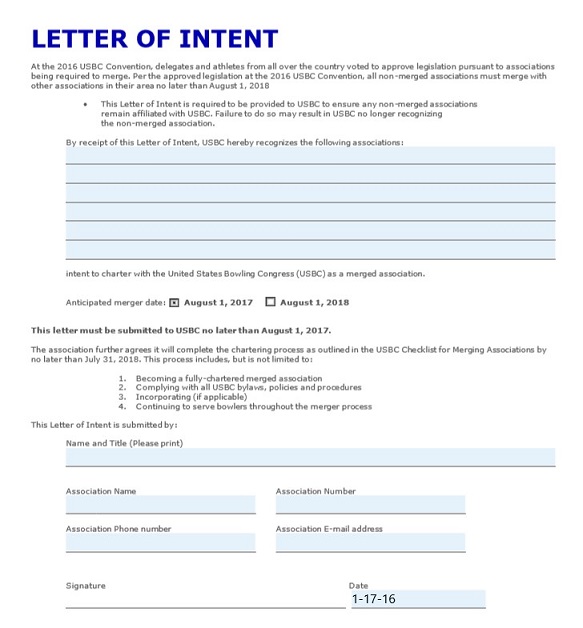
These templates are just starting points. You can download them and customize them to fit your specific needs. Remember, it’s always a fine idea to seek lawful guidance when preparing a letter of intent to confirm that it’s legally sound and accurately reflects your intentions.
Conclusion
It’s a vital tool that helps to prevent misunderstandings and sets the stage for a smooth transaction process. The letter of intent comprises four main parts: the heading, introduction, content, and conclusion. Each component is vital in getting the required details clearly and effectively.
Writing a letter of intent requires precision, clarity, and conciseness. It’s vital to avoid errors such as being too vague, failing to include all necessary details, or not clearly stating the intent. Utilizing letter of intent templates can significantly simplify the process and ensure all key elements are included.
FAQ
What is the primary purpose of a letter of intent?
A letter of intent is a prior agreement between two parties tracing a suggested deal’s essential terms and conditions. It helps to prevent misunderstandings and puts the scene for a soft transaction procedure.
How formal should a letter of intent be?
It should be formal and professional. It should be transparent, straightforward, and concise and avoid jargon or overly complicated vocabulary.
Is a letter of intent legally binding?
It is generally not lawfully crucial, but it can be binding if both parties agree. It’s primarily used as a tool for negotiation and does not commit either party to the transaction.
How long should a letter of intent be?
It should be brief and contain all required components. It’s typically a greatest of a few pages long.
Can a letter of intent be withdrawn?
Since a letter of intent is typically not legally binding, it can usually be withdrawn at any time. However, it’s important to communicate this clearly to the other party to avoid misunderstandings.
How is a letter of intent different from a contract?
It is typically used as a tool for negotiation and does not commit either party to the transaction, while a contract does.

The content creator team at calipsotree.com is dedicated to making topics accessible to everyone, with over 9 years of experience in writing and breaking down complex concepts into easy-to-understand articles that answer readers’ financial questions.






